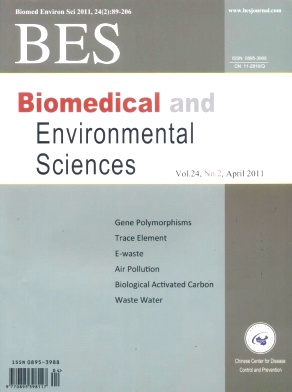Hyperuricemia Accompanied with Changes in the Retinal Microcirculation in a Chinese High-risk Population for Diabetes
doi: 10.3967/0895-3988.2011.02.009
-
Key words:
- Cardiovascular disease /
- Hypertension /
- Hyperuricemia /
- Metabolic syndrome /
- Retinal photograph /
- Retinal vessels /
- Uric acid
Abstract: Objective To investigate the association of retinal vascular calibers with hyperuricemia in a middle-aged and elderly population. Methods A cross-sectional design was applied in this study and 869 participants aged ≥40 years from a high-risk group for diabetes were recruited. All participants received the anthropometrical measurements and laboratory tests. Retinal arteriolar and venular caliber of the participants were measured with a semi-automated system. Hyperuricemia was defined as a serum uric acid level >420 μmol/L in men and >360 μmol/L in women. Linear regression models were used to assess the association of hyperuricemia with retinal vascular calibers. These models were additionally adjusted for age, central obesity, hypertension, dyslipidemia, weekly activity, smoking status, and education. Results Among the 869 participants, 133 (15.3%) suffered from hyperuricemia. The crude mean serum uric acid level was 312.3 μmol/L (Standard Deviation 79.5); mean concentration was 355.0 μmol/L (SD 75.5) in male participants, and 288.0 μmol/L (SD 71.1) in female participants (age-adjusted difference 58.1 μmol/L, 95% Confidence Internal 48.5, 67.6). After adjusting for additional covariates, male participants with hyperuricemia had 3.77 μm (95% Cl -0.46, 8.00) smaller arteriolar caliber and 6.20 μm (95% Cl 0.36, 12.04) larger venule than those without hyperuricemia; the corresponding numbers among female participants were 1.57 μm (95% Cl -1.07, 4.21) for retinal arteriolar caliber and 2.28 μm (95% Cl -1.72, 6.27) for retinal venular caliber.Conclusion Hyperuricemia was associated with smaller retinal arteriolar caliber and larger venularcaliber mainly in male participants in this study.
| Citation: | YUAN YuanZhi, M. Kamran IKRAM, JIANG SunFang, LIN HuanDong, REN LiMin, YAN HongMei, SHENG JianHua, CHEN XuSheng, GAO Xin. Hyperuricemia Accompanied with Changes in the Retinal Microcirculation in a Chinese High-risk Population for Diabetes[J]. Biomedical and Environmental Sciences, 2011, 24(2): 146-154. doi: 10.3967/0895-3988.2011.02.009 |







 Quick Links
Quick Links
 DownLoad:
DownLoad: